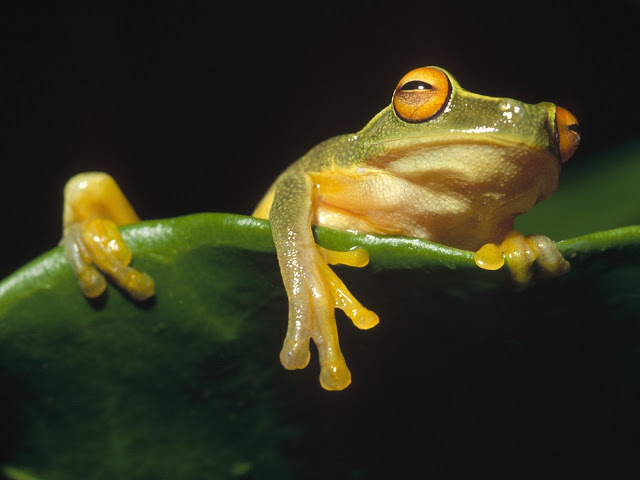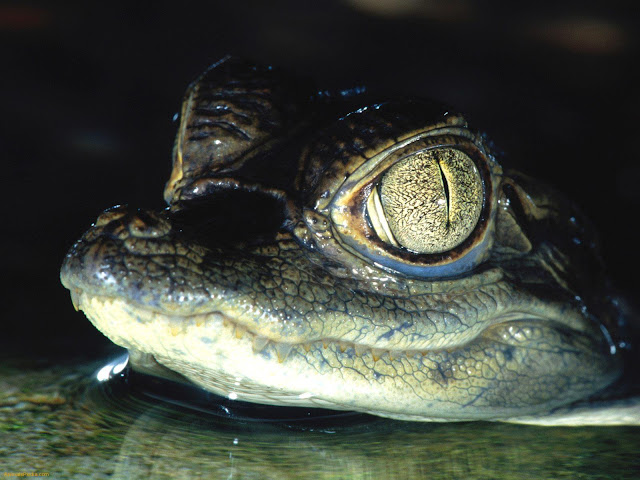Reptiles (Reptilia) are members of a group of air-breathing, ectothermic (cold-blooded) vertebrates which are characterized by laying shelled eggs (except for some vipers and constrictor snakes that give live birth), and having skin covered in scales and/or scutes. They are tetrapods, either having four limbs or being descended from four-limbed ancestors. Modern reptiles inhabit every continent with the exception of Antarctica. Reptiles originated around 320-310 million years ago during the Carboniferous period, having evolved from advanced reptile-like amphibians that became increasingly adapted to life on dry land. Four living orders are typically recognized:
Additionally, birds are included in Reptilia under phylogenetic definitions.
Unlike amphibians, reptiles do not have an aquatic larval stage. As a rule, reptiles are oviparous (egg-laying), although certain species of squamates retain the eggs until hatching and a few are viviparious. Many of the viviparous species feed their fetuses through various forms of placenta analogous to those of mammals, with some providing initial care for their hatchlings. Extant reptiles range in size from a tiny gecko, Sphaerodactylus ariasae, which can grow up to 1.7 cm (0.6 in) to the saltwater crocodile, Crocodylus porosus, which may reach 6 m in length and weigh over 1,000 kg.
Origin of the reptiles
The origin of the reptiles lies about 320–310 million years ago, in the steaming swamps of the late Carboniferous period, when the first reptiles evolved from advanced reptiliomorph labyrinthodonts. The oldest known animal that may have been an amniote, i.e. a primitive reptile rather than an advanced amphibian is Casineria. A series of footprints from the fossil strata of Nova Scotia, dated to 315 million years show typical reptilian toes and imprints of scales. The tracks are attributed to Hylonomus, the oldest unquestionable reptile known. It was a small, lizard-like animal, about 20 to 30 cm (8–12 in) long, with numerous sharp teeth indicating an insectivorous diet. Other examples include Westlothiana (for the moment considered a reptiliomorph amphibian rather than a true amniote) and Paleothyris, both of similar build and presumably similar habit.
Rise of the reptiles
Earliest reptiles were largely overshadowed by bigger labyrinthodont amphibians such as Cochleosaurus, and remained a small, inconspicuous part of the fauna until the Carboniferous Rainforest Collapse.[24] This sudden collapse affected several large groups. Amphibians were particularly devastated, while reptiles fared better, being ecologically adapted to the drier conditions that followed. Amphibians must return to water to lay eggs; in contrast, reptiles - whose eggs a shell that allows them to be laid on land - were better adapted to the new conditions. Reptiles acquired new niches at a faster rate than before the collapse and at a much faster rate than amphibians. They acquired new feeding strategies including herbivory and carnivory, previously only having been insectivores and piscivores.[24] From this point forward, reptiles dominated communities and had a greater diversity than amphibians, setting the stage for the Mesozoic (known as the Age of Reptiles).[25] One of the best known early reptiles is Mesosaurus, a genus from the early Permian that had returned to water, feeding on fish.



















































